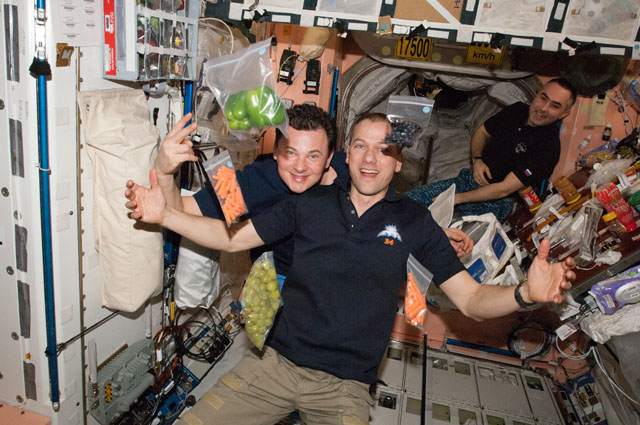NASA and a Texas company are exploring the possibility of using a “3D printer” on deep space missions in a way where the “D” would stand for dining.
NASA has awarded a Small Business Innovation Research (SBIR) Phase I contract to Systems and Materials Research Consultancy of Austin, Texas to study the feasibility of using additive manufacturing, better known as 3D printing, for making food in space.

Systems and Materials Research Consultancy will conduct a study for the development of a 3D printed food system for long duration space missions. Phase I SBIR proposals are very early stage concepts that may or may not mature into actual systems. This food printing technology may result in a phase II study, which still will be several years from being tested on an actual space flight.
As NASA ventures farther into space, whether redirecting an asteroid or sending astronauts to Mars, the agency will need to make improvements in life support systems, including how to feed the crew during those long deep space missions. NASA’s Advanced Food Technology program is interested in developing methods that will provide food to meet safety, acceptability, variety, and nutritional stability requirements for long exploration missions, while using the least amount of spacecraft resources and crew time. The current food system wouldn’t meet the nutritional needs and five-year shelf life required for a mission to Mars or other long duration missions. Because refrigeration and freezing require significant spacecraft resources, current NASA provisions consist solely of individually prepackaged shelf stable foods, processed with technologies that degrade the micronutrients in the foods.
Additionally, the current space food is selected before astronauts ever leave the ground and crew members don’t have the ability to personalize recipes or really prepare foods themselves. Over long duration missions, a variety of acceptable food is critical to ensure crew members continue to eat adequate amounts of food, and consequently, get the nutrients they need to maintain their health and performance.
NASA is funding this phase I six-month $125,000 study on 3D printing of foods to determine the capability of this technology to enable nutrient stability and provide a variety of foods from shelf stable ingredients, while minimizing crew time and waste. NASA selected this proposal because the research team, subcontractors and consultants included premier food rheology and flavor expertise that would be required for a novel product development system. The work plan for this feasibility study also was well laid out and the technology offers the potential to meet some of the food requirements using basic food components for long duration missions.
NASA recognizes in-space and additive manufacturing offers the potential for new mission opportunities, whether “printing” food, tools or entire spacecraft. Additive manufacturing offers opportunities to get the best fit, form and delivery systems of materials for deep space travel. This’s why NASA is a leading partner in the president’s National Network for Manufacturing Innovation and the Advanced Manufacturing Initiative.
3D printing is just one of the many transformation technologies that NASA is investing in to create the new knowledge and capabilities needed to enable future space missions while benefiting life here on Earth.






